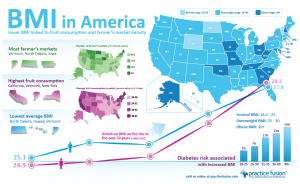 There’s a lot of chatter about Meaningful Use in the context of electronic health records adoption; if you Googled the term today you’d find millions of references to the concept. The Centers for Medicare and Medicaid Services (CMS)’s website offers three main components of Meaningful Use as specified in The American Recovery and Reinvestment Act of 2009:
There’s a lot of chatter about Meaningful Use in the context of electronic health records adoption; if you Googled the term today you’d find millions of references to the concept. The Centers for Medicare and Medicaid Services (CMS)’s website offers three main components of Meaningful Use as specified in The American Recovery and Reinvestment Act of 2009:
- – The use of a certified EHR in a meaningful manner, such as e-prescribing
- – The use of certified EHR technology for electronic exchange of health information to improve quality of health care
- – The use of certified EHR technology to submit clinical quality and other measures.
What about managing public health? That’s the end-game of meaningful use, and population health management is already being demonstrated by Practice Fusion, one of the disruptive electronic health record companies competing for physicians’ attention. The company appears to be successful to-date, with 65,000 users on the system.
Practice Fusion has gained thousands of user-fans in its three-year life. Key to their affection is that they say it’s an easy to use and implement web-based solution. The company is allied with Dell, which provides an accessible marketing and service channel for small and mid-sized physician practices — Practice Fusion’s target market. In the latest Brown-Wilson Black Book Rankings of electronic health records systems (a survey of 30,000 physicians), Practice Fusion was ranked #1 in customer satisfaction among doctors in primary care specialties. And, perhaps the most popular feature of Practice Fusion is that it’s free — as long as users accept ads that appear on the record’s screen. If users want to opt-out, they can pay $100 a month and continue to use the service. But according to Practice Fusion, only a handful have opted out of ads to-date.
Today, Practice Fusion has 70,000 users on its web-based platform serving 8 million patients. That’s a lot of health to manage, and in aggregate, a lot of rich data to mine in the interest of public health. The infographic pictured above, illustrating body mass index, was generated by Practice Fusion’s research division using de-identified data. The chart connects the dots between obesity and peoples’ access to farmers’ markets, as well as their consumption of fruit. As discussed this week by the CDC, there is something of an obesity belt in the southeastern quadrant of the U.S., along with higher BMIs in the lower midwest and where there are more sedentary lifestyles.
Health Populi’s Hot Points: The effective and full use of electronic health records should improve care for each health citizen in the U.S. whose doctor employs the technology. Magnifying EHR use across the U.S. — especially when the clinical records integrate data from peoples’ daily lives, defined as Observations of Daily Living by the Robert Wood Johnson Foundation — would generate the kinds of knowledge that Practice Fusion BMI graphic illustrates. This is powerful information that can inform resource allocation for public health and help target scarce health resources to be deployed where they’re most needed, and where the return on investment can be most fruitful. This is the transcendent meaning of meaningful use: population health management. This is the sound rationale for ARRA stimulus funding for EHRs: once health data liquidity becomes real, sound health care practices can be identified and that stubborn cost curve can be tamed.




 Thank you, Jared Johnson, for including me on the list of the
Thank you, Jared Johnson, for including me on the list of the  I am so grateful to Tom Lawry for asking me to pen the foreword for his book, Health Care Nation,
I am so grateful to Tom Lawry for asking me to pen the foreword for his book, Health Care Nation,  Thanks to Feedspot for naming this blog, Health Populi, as a
Thanks to Feedspot for naming this blog, Health Populi, as a